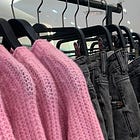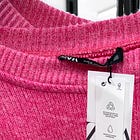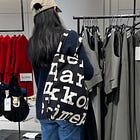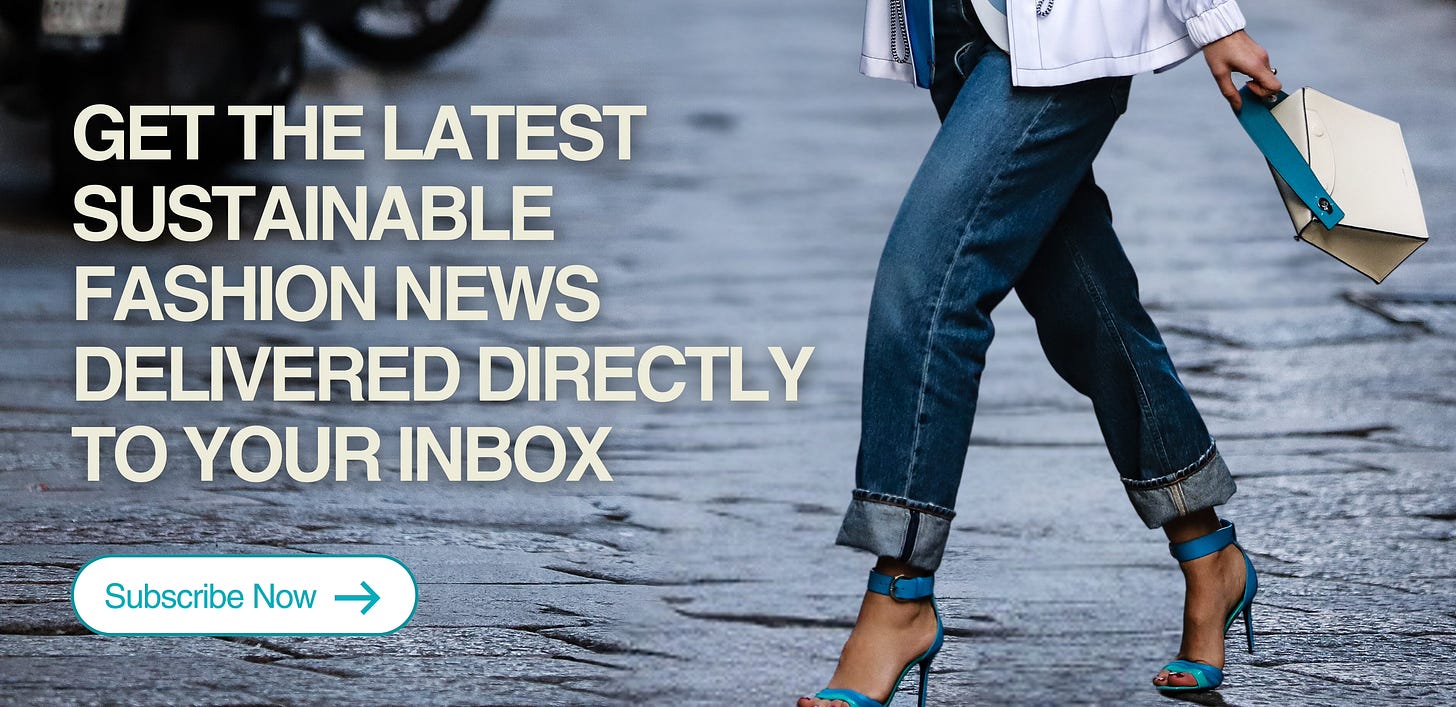October's Guide to Shaping Sustainable Consumer Choices in Fashion
From emotional durability and perceived value to bridging the attitude-behavior gap, October was packed with heavy-hitting insights and actionable takeaways!
How the hell is it already Halloween?! It feels like it was just October 1st, yet here we are—making last-minute costume decisions and resisting the urge to raid the candy stash before the trick-or-treaters even show up.
This month flew by, but it was packed with heavy-hitting insights and actionable strategies for the sustainable fashion industry and beyond.
From making sustainability aspirational and consumer-driven to addressing the 'attitude-behavior gap’ through perceived value, October’s content explored ways to align sustainable choices with consumers' desires for status, community, and social cachet.
Missed out? Become a paid subscriber for in-depth analysis and exclusive strategies at the intersection of fashion, consumer psychology, and sustainability—content that empowers you to meaningfully connect with today’s values-driven, socially motivated consumers.
We kicked off the month by exploring how social media and influencers shape our style choices, asking: If social media didn’t exist, would our wardrobes look the same? Are our clothes a reflection of our true selves, or are they curated for likes, follows, and social validation?
Fashion has long been a marker of social status and group affiliation, but today’s constant exposure to idealized lifestyles has created a feedback loop—often leaving us feeling that what we have is never enough. Fashion has shifted from individual expression to aligning with societal expectations, signaling values, and projecting an aspirational lifestyle shaped by online influence.
Using identity theory, FOMO (fear of missing out), herd behavior, and social comparison, we unpacked why trends catch on and how social pressures influence our choices.
For sustainable fashion, this shift presents a powerful opportunity to leverage social proof. In my paid subscriber content, I shared four actionable strategies for sustainable brands to position eco-conscious choices as the social signal consumers want to project, aligning sustainability with cultural relevance, social status, and group identity.
Next, we looked at Primark’s new Durability Framework, developed with WRAP, Hubbub, and the University of Leeds, which challenges the assumption that quality is linked to price. This framework demonstrates that with the right care, affordable garments can be just as durable as high-priced items, reshaping the conversation around longevity in fashion.
This insight led to a deeper look at 'emotional durability'—the attachment we feel toward clothing that’s tied to memories, identity, and emotional resonance—the often subconscious connection a person feels with something that evokes meaningful feelings or memories.
Emotional resonance happens when something connects with our values, identity, or past, making it feel meaningful or relatable.
So often sustainable fashion focuses on materials and ethics, overlooking the importance of building lasting consumer relationships aka connections that foster emotional durability. By focusing solely on sustainability, brands miss the aspirational and social appeal that mainstream fashion, from fast fashion to luxury, captures so effectively.
Sustainable brands need to adopt a consumer-centric strategy that makes consumers feel understood and valued—going beyond conventional assumptions about what they want or even….what they say they want.
In my deep dive into the 'attitude-behavior gap,' (Part two of The Fashion Exec’s Guide to Influencing Sustainable Consumer Behavior) I unpacked why consumers' values don't always align with their actions. Price is often seen as the primary barrier to sustainable purchases, and while that’s true for some, it’s not the full story.
Many shoppers, including those with limited budgets, prioritize brands and retailers that provide social validation, trend alignment, and a sense of belonging within their peer groups—qualities sustainable fashion often struggles to match.
This theme continued into a discussion about Shein’s success where I shared my hot take: Shein’s products may be lower in quality and price, but to the mainstream consumer, Shein offers a higher perceived value because it delivers on what really matters to them: social validation, trendiness, and status.
To bridge this gap, I provided paid subscribers with five strategies to tap into the emotional pull that makes fast fashion so compelling, while staying true to sustainable values.
In part one of The Fashion Exec’s Guide to Influencing Sustainable Consumer Behavior, I explored the cultural, emotional, and psychological influences that drive fashion choices. This included cognitive biases like status quo bias, confirmation bias, and temporal discounting, all of which create barriers to sustainable shopping. My paid subscriber content provided actionable insights on leveraging these psychological drivers to address the biases and barriers that prevent consumers from adopting sustainable behaviors.
One of the strategies I shared focuses on counteracting status quo bias—our tendency to stick with familiar habits and resist change—by making sustainable fashion just as visible, accessible, and appealing as mainstream brands. The goal is to make sustainability a seamless choice that aligns naturally with consumer habits, encouraging them to incorporate sustainable practices without friction.
This focus on visibility and accessibility led us to Zara’s Pre-Owned platform. While critics argue this initiative is merely 'lip service' to environmental concerns, pointing out that true sustainability would require Zara to address its core business model of mass production hundreds of new items each week, (a view I wholeheartedly share)—the platform itself does a great job of making circularity feel approachable and relevant to everyday consumers.
When you first land on the Zara Pre-Owned website, you’re greeted by a bird’s-eye view video loop showing regular people going about their routines—shopping for groceries, carrying flowers, skateboarding, grabbing pizza, hanging out with friends. It might seem random at first, but it’s actually brilliant.
These visuals, along with other aspects of the site, ground the platform in everyday life, creating a sense of normalcy around sustainability.
Instead of making second-hand shopping or clothing repair feel like something extra or overwhelming, Zara shows that circular fashion is just part of daily life—something anyone can do without a second thought. It’s not just for the 'eco-conscious'; it’s for anyone wanting to make practical, accessible choices.
By humanizing circularity and making it feel natural, Zara reduces the mental barriers that often keep people from choosing sustainable options. The platform subtly positions participation in the Pre-Owned initiative as socially desirable, accessible, and—most importantly—effortless.
For paid subscribers, I shared insights on how sustainable brands can do the same, positioning eco-friendly choices as a natural, accessible option that feels socially desirable and easy to adopt. I also gave my two cents on what I would do if I were on Zara’s sustainability team.
A common theme that kept coming up this month was: How can brands (and the industry in general) go beyond eco-credentials to deliver the aspirational and socially desirable appeal that mainstream brands have mastered?
Zara’s Pre-Owned platform offers one approach, while Everlane’s recent leadership shift—bringing in Matthieu Chang, formerly of Fear of God—might signal another.
Fear of God has built its success on a mix of cultural relevance and exclusivity, creating a brand that feels both aspirational and effortlessly cool. Chang’s experience could be exactly what Everlane needs to elevate its sustainability mission, infusing it with an edge that resonates deeply with today’s socially-driven consumer. The question is, can Chang help Everlane break out of its basics-focused mold and reach new heights in both style and status appeal?
For paid subscribers, I unpack how Chang’s approach might shape Everlane’s evolution, from strategic product positioning to potential collaborations that boost cultural relevance—insights that could redefine Everlane’s place in the sustainable fashion landscape.
In a similar vein—i.e., sustainability-minded brands that have achieved mainstream success but face criticism over their sustainability claims—I explore how Ganni’s approach to visibility goes beyond budget, tapping into a nuanced understanding of consumer psychology and brand-building—a strategic edge that many smaller brands overlook. By mastering this balance, Ganni demonstrates how sustainability can be normalized in the mainstream, subtly shaping consumer behavior on a large scale.
For paid subscribers, I shared actionable lessons for brands of any size—insights that move beyond budget, leveraging consumer psychology to make sustainability resonate with a broader audience.
In another article I questioned our collective happiness asking, 'We’re buying more shit, but are we actually happier?'
As consumption increases, studies show that satisfaction often comes less from what we buy and more from meaningful experiences and connections. This shift is especially evident among Gen Z, who increasingly value experiences over materialism.
As Gen Z redefines their expectations for brand interaction, the sustainable fashion sector is particularly well-positioned to meet their need for authenticity and meaningful connection. In contrast to the cycle of fleeting trends and consumer dissatisfaction, sustainable brands have a unique opportunity to foster genuine, values-driven communities that resonate with younger consumers seeking a sense of belonging, trust, and cultural relevance.
For paid subscribers, I discussed how sustainable brands can go beyond transactional relationships to create spaces for ongoing engagement—where sustainability becomes a shared experience rather than just a purchase.
Finally, in true October spirit, I broke down Woolmark’s "Wear Wool, Not Waste" campaign, analyzing how it cleverly taps into the eerie, unsettling vibe of Halloween with its haunting visuals of discarded clothes flooding the streets like a zombie apocalypse.
This cinematic approach gives the campaign a unique, memorable edge, contrasting sharply with the usual sustainability messaging loaded with stats or guilt. Instead, Woolmark’s campaign sparks curiosity, encouraging viewers to think about the lasting impact of synthetic materials in an unexpected, thought-provoking way, casting wool as the hero in a dystopian narrative.
I explored how Woolmark leverages consumer psychology to keep sustainability top of mind, using curiosity and emotion to drive engagement—a tactic that sustainable brands can adopt to make their messaging stand out. Plus, my interview with John Roberts, CEO of Australian Wool Innovation and Managing Director of The Woolmark Company, provides an inside look into the creative process behind the campaign and their strategy for long-term sustainability impact.
We covered a lot of ground this month, and this wasn’t even everything! But now, I’d love to hear from you!
Which insights stood out to you this month? Are you planning to integrate any of these strategies into your own work? Join the conversation in the comments below—this post is open to everyone, so let’s keep the discussion going!
Enjoyed this post? Here are a few ways to support my work—and join a community of like-minded readers invested in the future of sustainable fashion!
→ Share this post with friends, colleagues, or anyone who’d find value in it.
→ Show some love with a heart or comment; it helps others discover my work.
→ Become a paid subscriber to unlock exclusive insights and actionable strategies that are shaping the future of sustainable fashion. Paid content dives deeper into the psychology behind consumer behavior and gives you the tools to stay ahead in a competitive market. Your support means more in-depth, impactful content for our community!













